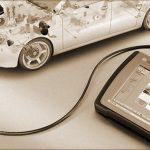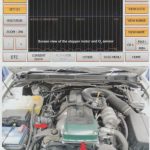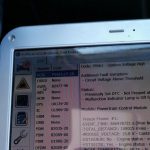Having trouble with a Ford car? You might want to know which Ford codes mean what. You can learn about P0150, P0782, 9600, and more! Read this article to learn more about these codes and what they mean for your car. Here, we’ll look at what each of these codes mean, how to identify them, and how to fix them. Read on for helpful advice. Also, see which codes are actually related to your car model.
P0150
If your vehicle is giving you a P0150 code, you need to take it to a mechanic. These mechanics can diagnose and repair the problem. The cost of diagnosing a P0150 code can vary, but the labor involved will be approximately an hour or less. A mechanic will charge between $75 and $150 per hour. The time it takes to diagnose a P0150 code is dependent on the vehicle’s make, model, and engine type.
One cause of a P0150 code is a faulty oxygen sensor. The wiring or connectors that connect the O2 sensor should be replaced. If your car’s exhaust has a leak, the oxygen sensor will think too much and the PCM will enrich the mixture. This will cause the car to consume more fuel. Identifying the root cause of this problem can help you to make the right repair decision. You can also look at repair tips on Ford’s website.
Another reason why a Ford may display the P0150 code is when the O2 sensor is not transmitting the correct voltage to the Engine Control Module. The O2 sensor transmits voltage in relation to the oxygen in the exhaust. If the voltage is outside of its normal range, the Engine Control Module will receive a P0150 code. The problem may impact fuel economy. If the O2 sensor is not functioning properly, the engine will start to run rich, or the spark plugs will become fouled.
The oxygen sensor is the main source of a P0150 code. The oxygen content in the air is a significant factor in the resistance of this sensor. The PCM supplies this voltage to the oxygen sensor. When this voltage is too low, the engine’s oxygen sensor is unable to function properly. When this happens, the engine control module perceives a malfunction and turns off the engine. The Malfunction Indicator Lamp (also known as the CheckEngine Light) illuminates.
If you suspect that the O2 sensor is faulty, check your vehicle’s service manual for more information on identifying the problem. The service manual contains a comprehensive list of DTCs, along with the diagnostic procedures for each. Using the search function to look up a specific code, you can easily get a list of solutions. This code is generated by the O2 sensor, the first downstream sensor. If the sensor is bad, you should visit a mechanic.
P0782
This Ford P0782 codes list will help you diagnose a troublesome problem with your vehicle. The code is associated with a shift function issue between gears two and three. If you experience difficulty shifting gears, this code may indicate a problem with your transmission. This code can lead to a blown transmission, decreased fuel efficiency, slippage, and other issues. It can also cause the Check Engine Light to illuminate.
Fortunately, there are ways to repair your car. A comprehensive list of DTCs can be found in the vehicle service manual. Select the DTC you are looking for and find the repair information you need. You can even use a search function to locate specific error codes. Once you find a code, you can get the details you need quickly. Listed below are a few common Ford P0782 codes. Once you know what this code means, you can take action to fix it.
The cause of a P0782 Ford code isn’t always clear, but there are some things you can try to troubleshoot it yourself. A broken MIL sensor is one possible problem. The engine coolant temperature circuit must also be working properly. If you can’t resolve this yourself, you can consult a mechanic. If your car keeps emitting the code, you should take it to a mechanic right away.
The most common way to read the code is by using an OBD-II scanner. These devices plug into your vehicle’s diagnostic port and provide a five-character code. Some models feature software to interpret the codes. Code readers are more affordable than scanners but don’t offer the same functionality as scanners. They can also cause you to miss important maintenance. And the best part? They’re easy to use!
P0096
There are several causes for the P0096 FORD code. Whether the code is associated with a specific vehicle model or an old one, it can be a useful tool in diagnosing your car’s problems. Ford has issued a service bulletin to correct a common issue. This problem affects some 3.5L engines that were manufactured after 2/7/12. Fortunately, the fix is relatively simple. Listed below are some of the most common causes of P0096 codes.
A high P0096 code means that a sensor is not functioning properly. In this case, the ECM is interpreting the outside temperature as lower than the inside temperature. This causes the engine to run rough and the Check Engine Light to illuminate. If the code is present, your mechanic will visually check the wiring harness and electrical connections to the intake air temperature sensor. After performing these steps, he or she will scan the IAT2 sensor and compare its output with the mass air sensor.
A sensor that measures the air temperature entering the mass air flow meter is responsible for triggering the P0096 code. The IAT2 is located in the air intake system and the resistance of this sensor varies with temperature. The voltage generated from the sensor changes with air temperature. When the sensor is malfunctioning, the ECM will illuminate the misfire indicator lamp and store the P0096 code in the ECM. If the check engine light is on, the fault has been identified and is now being addressed.
The best way to fix this problem is to reprogram the ECM. This will reset the ECM, install a new pump, or rewire the connection. In many cases, a repair may be enough to solve the problem. If the problem persists, a technician may need to reflash the ECM. If the problem is intermittent, it is probably not a sensor problem. The best way to diagnose it is to check the engine’s IAT sensor with a scan tool.
A malfunctioning Intake Air Temperature sensor is another reason for Ford P0096 codes. This sensor contains a semiconductor device that changes resistance based on temperature. The sensor is located in the engine’s intake duct. The sensor has two circuits: a signal and a ground. If one is not working properly, the other will set the OBDII code. The temperature sensor should be installed correctly to fix the problem.
9600
If you notice that your car is giving you trouble through the OBD2 connector, you may have a problem with your transmission fluid temperature controller. The problem could also lie with a sensor or contact. To fix your car, here are some tips to solve your problem:
The first code is P0A0F, which indicates an inability to start the power unit. This code can be caused by many different problems, such as a clogged fuel filter or a discharged battery. Another code is P9600, which means that the immobilizer has lost communication with the powertrain control module. P9602 is another common problem, and it indicates that the key tag is corrupted.
Some of the more common problems can be caused by the engine’s control module. In case of a P1585 code, a malfunction in the throttle damper can result in emergency operation. To resolve this problem, you should check the damper, clean it, and lubricate it properly. If it does not work, you may have a damaged circuit and need to replace it. If you see visible damage, it’s a good idea to replace the whole system.





